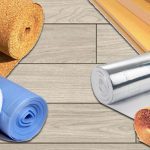Drywall is one of the most widely used finishing materials. Its popularity is well deserved - it is lightweight, flexible, environmentally friendly, durable, easy-to-use material. It is convenient to use gypsum plasterboard to align the walls and ceiling; sometimes it is even used to level the floor. And, nevertheless, there are cases when it becomes necessary to replace drywall with another, alternative finishing material.

Why drywall may need a replacement
This material, having a lot of advantages, is not without its drawbacks, which include:
- Fragility;
- Instability to influence of moisture;
- Drywall decoration “steals” the space, so it is not practical to use it in small rooms.
Therefore, in some cases it makes sense to replace the gypsum with a more suitable alternative finishing material.
What can replace drywall?
Depending on the situation, instead of drywall, you can use materials such as:
- OSB plate - it is considered to be a very good finishing material, which in some cases can completely replace drywall, especially since OSB costs much less than gypsum;

- Glass-magnesite plate (SMG) - is quite suitable as an alternative to drywall finishing material. It is used when filing ceilings, leveling walls, creating a multi-level floor, etc. lack of material - the price is higher than that of drywall;

- Chipboard - an excellent replacement for gypsum in the construction of interior partitions;

- Tongue-and-groove plate (GWP) - the material is much stronger than gypsum, can be used well for the construction of walls and partitions. GWP is made from the same gypsum, but with additives that make the board stronger than drywall. On sale there is a hollow and full-bodied plate. The material is durable and has good soundproofing properties;

- Plywood is not the best option to replace drywall, in comparison with which plywood loses according to the following parameters: combustibility, difficulty in operation (gypsum can be cut with a conventional stationery knife, work with plywood heavier). It is more difficult to stick wallpaper on a plywood surface, apply a coat of paint, etc. In addition, drywall is preferable for the installation of complex flexible structures. The main advantage of plywood over gypsum is its lower cost.

As you can see, there are a lot of alternatives to drywall, but do not forget that all these materials are used in different areas, so comparing them will not be entirely correct - each material is in its own way good in one way or another situation.
-
 Where you can not apply glazing from soft PVC sheets
Where you can not apply glazing from soft PVC sheets
-
 What type of sandwich panels is the best
What type of sandwich panels is the best
-
 Why is mineral wool dangerous to health?
Why is mineral wool dangerous to health?
-
 Why acrylic plaster is better than other coatings
Why acrylic plaster is better than other coatings
-
 What is the optimal thickness of the substrate for the laminate
What is the optimal thickness of the substrate for the laminate
-
 What facade for the house will be the warmest
What facade for the house will be the warmest
-
 Liquid wallpaper: advantages, application technology
Liquid wallpaper: advantages, application technology
-
 What crushed stone can be hazardous to health?
What crushed stone can be hazardous to health?
-
 Characterization and use of glassizol in modern construction
Characterization and use of glassizol in modern construction
-
 Types of balusters and their features
Types of balusters and their features
-
 What is the lack of wallpaper for painting
What is the lack of wallpaper for painting
-
 Linkrust: characteristics and technology of gluing
Linkrust: characteristics and technology of gluing
New publications are published daily on our channel in Yandex. Zen
Go to Yandex. Zen


